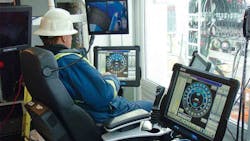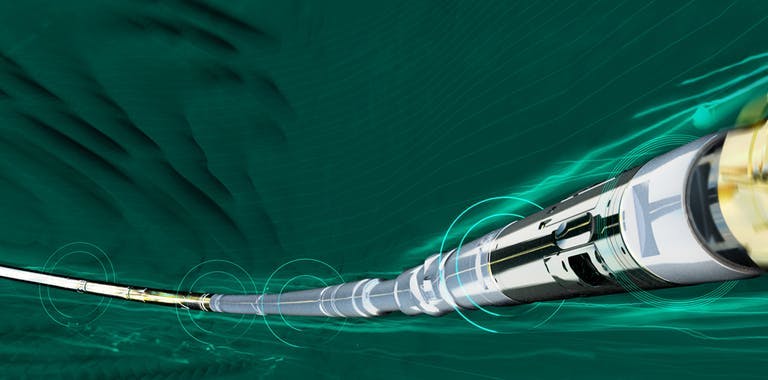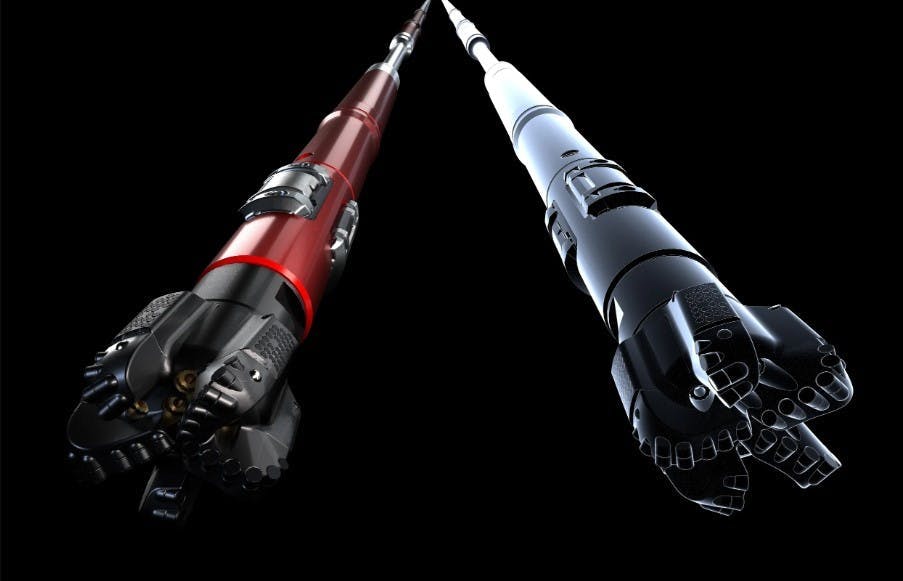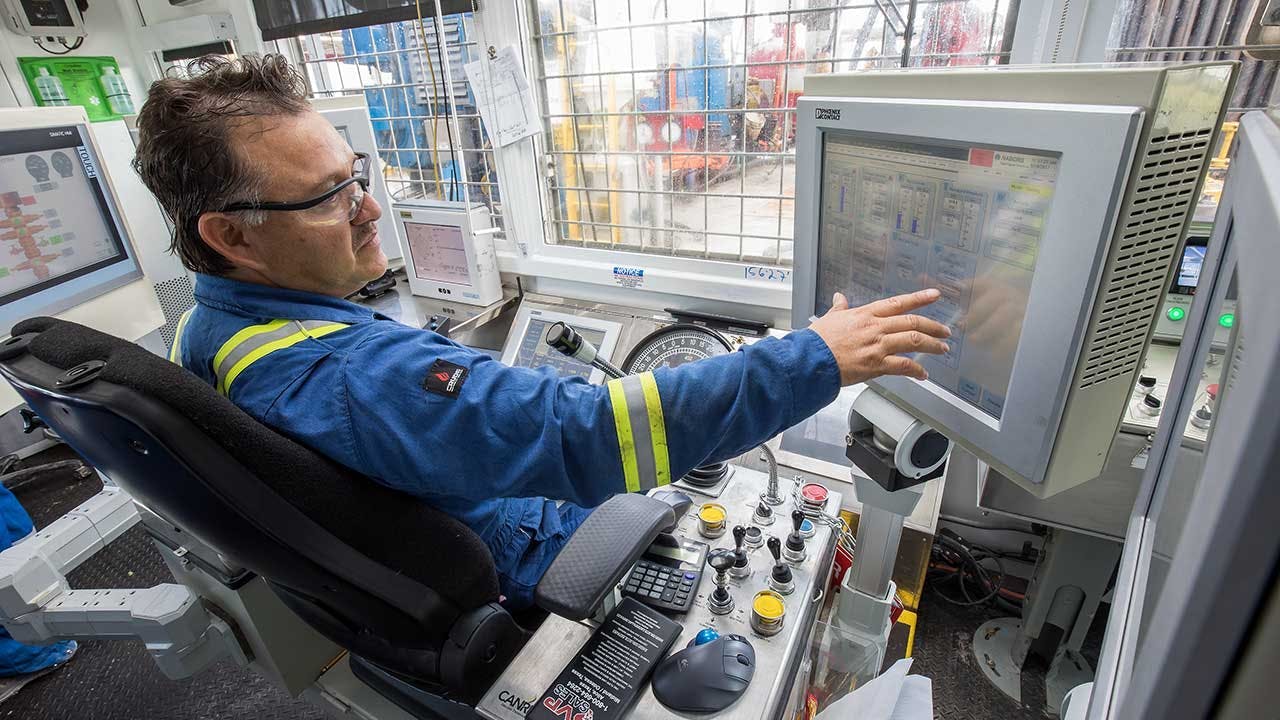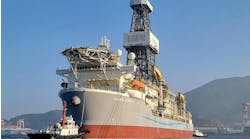Editor's note: This cover story first appeared in the July/August 2024 issue of Offshore magazine.
By Bruce Beaubouef, Managing Editor
Automation is playing an increasingly significant role in oil and gas drilling operations. The use of automated systems for tasks such as drilling, well completion, and maintenance has reduced the need for human intervention, leading to improved safety, higher accuracy, and lower costs. Some drilling rigs now use fully automated systems that can control drilling processes from start to finish, including the handling of drilling fluids and the setting of casing.
These new automated systems can analyze data in real-time to optimize drilling parameters such as speed, angle, and pressure. This not only increases efficiency but also reduces downtime due to equipment failures or human errors. One key area of advancements is in directional drilling, where autonomous methods are being adopted in several offshore E&P areas worldwide. This technology enhances operational efficiency and sustainability, providing benefits, such as cost reduction, risk mitigation, and reduced operational uncertainty.
Over the past few years, a number of downhole service firms and oilfield equipment manufacturers have been working with drillers and rig operators in the field to advance automation technology for drilling operations.
Simplifying drilling operations
Earlier this year, SLB reported that it had made a significant step toward fully autonomous drilling operations at Equinor’s Peregrino C platform offshore Brazil. Using its OnTrack DrillPilot software, SLB says the entire drilling operation acts as a complete system instead of discrete components, thereby simplifying operation and preparation for the operator. The company says it combined a suite of its digital technologies for surface automation, autonomous on-bottom drilling, and directional drilling to enable 99% of a 2.6-km section to be drilled in autonomous control mode. Over a five-well program, a 60% increase in rate of penetration (ROP) was achieved, resulting in faster well delivery while reducing cost and carbon emissions, according to SLB.
The companies say they collaborated to design and implement interconnected autonomous workflows, enabling the system to drill the section. On the rig floor, manual pipehandling and equipment sequencing tasks were automated with SLB’s DrillPilot software. On-bottom drilling performance was maximized using AI-driven technology in the DrillOps automation technology. SLB’s Neuro autonomous tools determined the optimum trajectory and delivered the well plan, adjusting steering sequences and drilling parameters to reach the target as designed by the DrillPlan coherent well construction planning technology.
SLB says that the DrillOps and DrillPlan tools are cloud-based applications on the Delfi digital platform. The platform is designed to combine apps, AI, physics-based science and free-flowing data to accelerate and improve exploration, development, drilling, production and new energy operations.
Technology minimizes drilling risks
Elsewhere, Baker Hughes reports that its i-Trak drilling automation solution was able to reduce liner tripping time by nearly 50% on a job in the North Sea. In this case, a European operator working on the North Sea’s continental shelf was looking for new ways to add incremental value to a development campaign that was already underway. Baker Hughes partnered with the operator on the well construction program and proposed the use of its i-Trak drilling automation service.
The Baker Hughes team deployed a real-time digital twin that was pre-loaded with its JewelSuite software’s earth-model-derived boundary conditions including pore, collapse, and fracture pressures. The software drilling engineering package also incorporated the rig equipment’s mechanical constraints in order to be able to automatically deliver the optimum tripping velocity based on the current bit depth. The optimum value was dynamic, adapting to operational states such as pumps-off tripping, pumps-on tripping, or reaming operations. The i-Trak service reportedly provided engineers with this optimum speed and automatically alerted them if the actual observed speeds dropped below the optimum tripping speeds.
Engineers located in an onshore remote operations center were able to continually monitor the liner speeds, and were automatically alerted when running speeds were deemed sub-optimal in both the cased-hole and openhole running operations for the 9 7/8-in. liner. These remote engineers then advised the offshore personal on necessary parameters to optimize the tripping speeds. In the openhole section, Baker Hughes says that the i-Trak service achieved an average running speed of 889.8 m/hr (2,919 ft/hr) that was more than two times the rig’s historical average for the same operation in the field. In total, the operations managed using the i-Trak service saved more than 13.8 hours as compared to the plan—saving the operator more than US $180,000 based on the rig-rate alone. In addition to these quantifiable savings, all tripping operations were reportedly performed within the safety margins and without any swab or surge incidents.
Baker Hughes also says that it has employed its i-Trak technology to help create an automated fluids monitoring service that enables rapid barite sag detection, to avoid hours of NPT. In this case, a major North Sea operator faced serious barite sagging challenges while drilling with an invert emulsion fluid (IEF) system. The IEF system was lab tested against many risks—barite sagging included—prior to developing the final fluid program. While the IEF system’s rheology remained in-spec during dynamic conditions, it could not withstand prolonged static conditions at high temperatures and pressures downhole. These conditions eventually caused the barite to sag or drop out of the IEF system, leading to out-of-spec mud weight and rheology and potential plugging of the string.
The operator asked Baker Hughes to develop an early warning solution to identify the onset of barite sagging. This would allow the drilling team in the remote center to detect slight changes to mud weight much faster than is possible for a rig crew relying on less frequent manual checks. Without early detection and quick action, the level of barite sag would make remediating the fluid properties much more challenging—requiring long circulation times and increasing the risk of stuck drillstring.
To develop an automated monitoring solution, Baker Hughes says that its proposed using its i-Trak automated fluids monitoring unit for continuous monitoring of fluid and drilling parameters combined with automated analysis and real-time technical support. By reducing the time required to identify the onset of sagging, the service also guided the fluids team on the right course of action to treat the fluid early and avoid long hours of circulation time typically required to remediate a barite sagging problem.
After system deployment, Baker Hughes says that its i-Trak automated fluids monitoring service identified barite sag within 30 minutes of its first occurrence. This allowed the drilling team to take corrective actions and eliminate the issue faster than the sag problem could even be identified using conventional methods.
Automation systems increase ROP
Halliburton reports that over the past three years, implementation of its LOGIX autonomous drilling platform on the Norwegian Continental Shelf (NCS) has consistently optimized performance in diverse fields, rigs, and drilling trajectories. To enable these improvements, the company says that its team performed a number of benchmarking studies to contrast conventional drilling methods with autonomous directional drilling cases in this region. They identified candidate hole sections based on drilling difficulty indexes and specific rotary steerable systems (RSS) used. This analysis considered various metrics relevant to the technical impact of automation, including ROP, trajectory accuracy, failure-related trips, and automation-specific key performance indicators such as NPT and drilling dysfunctions. The team also quantified inter-failure drilling distance. Halliburton says that this assessment spanned individual rigs and fieldwide levels with a focus on comparable hole section types.
The primary drilling objectives in these NCS cases was to increase ROP while ensuring a consistent response in dogleg severity (DLS) to maintain a smooth hole profile, which is crucial for subsequent casing, liner, and completion runs. To address these challenges and uncertainties, Halliburton proposed a comprehensive automation solution aligned with the operator’s long-term vision, built on three core pillars supported by various enablers. One of these pillars was drilling automation. To achieve faster drilling rates without compromising safety or consistency, the proposed drilling automation solution incorporated a number of drilling technology tools, including its LOGIX autonomous drilling platform. The team deployed the platform in conjunction with Halliburton’s DrillingXpert software, and the iCruise and Geo-Pilot rotary steerable systems.
The goal of automation in these cases was to help facilitate improved ROP as compared to conventional drilling techniques. During traditional drilling operations, the balance between performance and reliability relies solely on the experience of the directional driller, often leading to inconsistency and hidden lost time. In contrast, Halliburton reported that its LOGIX autonomous drilling platform used “intelligent” execution algorithms that continuously adapt steering settings and drilling parameters to achieve an optimal combination and maximize ROP within recommended limits. Overall, the company reported that this automated approach improved average ROP by 23.4% over the last three years of operation on the NCS.
Casing, liner, and completion running operations are crucial during well construction. Failing to reach the required setting depth can increase construction costs, defer production, and cause NPT and lost reserves. A comparative analysis was performed on 30 wellbore sections with diameters of 8.5, 12.25, and 17.5 in., drilled using both the LOGIX platform and conventional methods. Two key performance indicators were of focus, the gross average casing/liner running time per stand in the open hole and the consistency index of casing/liner running. Both drilling approaches achieved the desired well trajectories, but Halliburton reported that its automated LOGIX platform model reduced casing and liner running times by up to 15% in the openhole sections. The consistency index, which measures proximity to the physical limit of each casing/liner running operation, also improved by 8.5% with the LOGIX platform compared to conventional drilling. These values represent increased uniformity and reliability in casing and liner running processes.
As demonstrated in these NCS cases, Halliburton reported that the autonomous directional drilling technology was able to improve ROP. It did this by autonomously adapting the steering force and tool face to align with the desired DLS to effectively reduce tortuosity. These enhancements are said to have positively impacted casing, liner, and completion running operations while also reducing operational and HSE risks. Integration with high-frequency data from the RSS helps improve wellbore quality with greater consistency and accuracy, Halliburton says. This eliminates the manual labor associated with steering tasks. Additionally, the LOGIX platform was reportedly able to incorporate surface curve control mode and downhole closed-loop automation. This is said to enhance the steering response in the bottom hole assembly and minimize onsite personnel, thereby reducing offshore work-related risk.
Teaming up
And downhole service firms are teaming up to advance new automated drilling solutions.
Earlier this year, SLB and Nabors Industries announced a collaboration to scale the adoption of automated drilling solutions for oil and gas operators and drilling contractors.
The companies say that the agreement will enable customers to integrate their drilling automation applications and rig operating systems to deliver improved well construction performance and efficiency. The new integration is designed to provide customers with access to a broader suite of drilling automation technologies and greater flexibility to utilize their existing rig control systems and equipment on either SLB’s PRECISE or Nabors’ SmartROS rig operating system.
Digital twins and AI
The use of digital twins and AI may represent the next milestone for drilling automation. In a paper entitled “Drilling Advisory Automation with Digital Twin and AI Technologies” presented at the SPE/IADC Drilling Conference in March, the Stavanger-based software firm eDrilling AS set forth the possibilities for an autonomous drilling advisory system powered by digital twins and AI solutions. Such an advisory system could, the authors contended, automate real-time monitoring and parameter optimization, and meet the demands for safer and more efficient autonomous drilling operations.
The authors described the possibilities for the creation of a comprehensive digital twin model that accurately replicated the drilling process by integrating hydraulic, thermal dynamic, and mechanical models. To ensure high model accuracy, they developed an auto-calibration approach, driven by real-time data, to fine-tune the digital twin models. Additionally, AI-based model reasoning techniques were employed to detect potential hazards and risks ahead of the bit proactively. This is achieved by comparing the ideal behavior of the digital twin replica with the actual bit behavior downhole and from the rig. As a result, real-time diagnostics were generated to supervise ongoing operations, accompanied by suggestions to mitigate identified risks. Furthermore, the system leverages the capabilities of the digital twin and optimization methods to create multiple combinations of operational parameters. These parameters were optimized by ranking the predicted performance derived from the digital twin. In a real-world scenario, the optimized operational parameters can then be automatically generated as forward advice to drillers, enabling them to make informed decisions and enhance drilling performance.
The authors reported that the system was tested on multiple wells from different operators, and the results confirmed the system’s real-time monitoring and drilling parameter optimization capabilities. In the paper, the authors contended that the system demonstrated its effectiveness in providing diagnostic messages with early anomaly detection during drilling and casing running. These diagnostic warnings included losses, leakage, poor hole cleaning, and stuck pipe, thus enabling proactive intervention to mitigate risks.
The authors also contended that the system optimizes operational parameters during drilling and tripping in real-time without requiring human intervention. This optimization covers parameters such as flow rate, rotary speed (RPM) and ROP during drilling, and tripping speed during tripping in and pulling out of the hole.
The authors said that the time savings achieved through the use of optimized parameters can be quantified for both RPM and ROP, demonstrating a substantial improvement in operational efficiency while maintaining safety margins. The authors concluded that the results highlight the potential benefits of combining AI and digital twin technologies in the drilling industry, paving the way for future innovations and advancements in the field.
